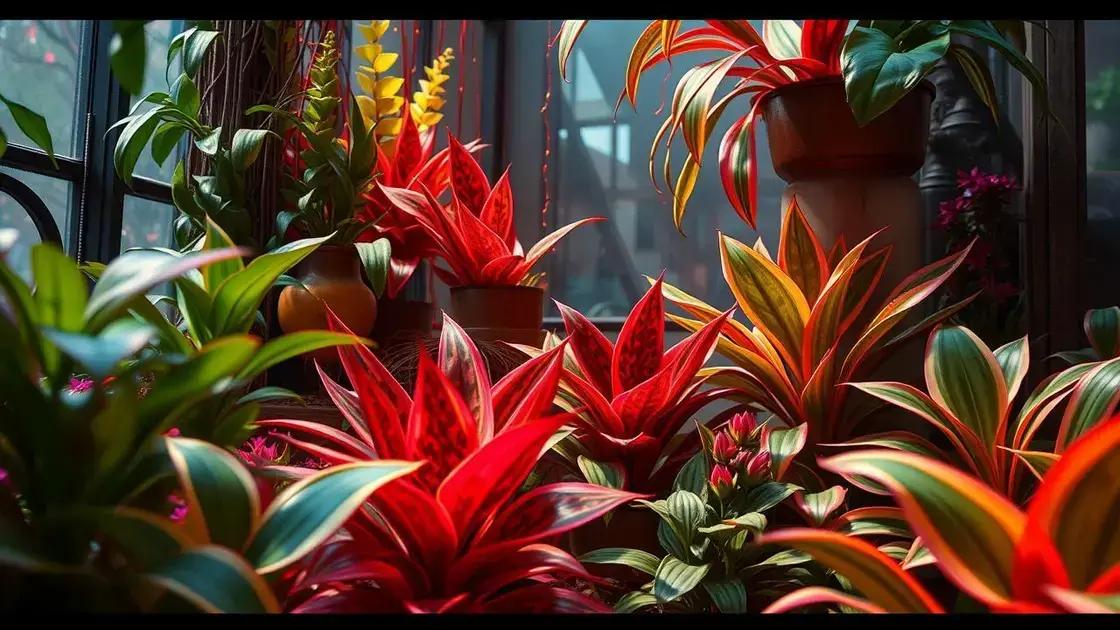How to Care for Prayer Plants Indoors: 7 Essential Tips for Success
How to care for prayer plants indoors is a question many plant lovers ask. These beautiful and unique plants are not just visually appealing, they also need specific conditions to thrive. In this guide, we will explore the best methods to ensure your prayer plants flourish in your indoor space. Let’s dive into the basics of care needed for these remarkable plants.
Table of Contents
ToggleUnderstanding prayer plant care requirements
Understanding prayer plant care requirements is essential for keeping these captivating plants healthy and vibrant in your home. Prayer plants, known scientifically as Maranta leuconeura, require specific conditions to thrive indoors. These unique plants are famous for their striking foliage and interesting habit of folding their leaves at night, resembling a prayer posture. To ensure that your prayer plants flourish, you’ll want to pay attention to several key aspects of their care.
Light conditions for prayer plants
Prayer plants adapt well to low light, making them perfect for indoor spaces. However, providing the right lighting can enhance their color and growth:
- Indirect sunlight is ideal; direct sun can scorch their leaves.
- Place near a window with filtered light for optimal health.
- In lower light conditions, their growth will slow, but they will still survive.
Watering requirements
Caring for prayer plants includes understanding their watering needs.
- Keep the soil consistently moist but not soggy.
- Water when the top inch of soil feels dry to the touch.
- During winter, reduce watering as growth slows down.
Humidity needs for prayer plants
One of the most crucial factors is humidity. Prayer plants thrive in environments with high humidity:
- Maintain humidity levels between 50-70% for best results.
- Consider misting them regularly or using a humidity tray.
- You can also increase humidity by exploring indoor gardening techniques.
Soil and fertilization
The right soil mix is crucial for prayer plant care:
- Use a well-draining potting mix that retains some moisture.
- A mix specifically formulated for houseplants works well.
- Fertilize monthly during the growing season for nutrient boost.
Common problems and solutions
Be mindful of common issues that might affect your prayer plants:
- Yellowing leaves can indicate overwatering or low light.
- Brown leaf tips often signify low humidity.
- Pests like spider mites may appear; isolate affected plants and treat as necessary.
By understanding these essential prayer plant care requirements, you can create an environment where your plants not only survive but thrive. With the right attention, your Maranta leuconeura will bring beauty and life to your indoor spaces.
Optimizing light and humidity for prayer plants

Optimizing light and humidity for prayer plants is crucial for their health and growth. These beautiful plants flourish when their specific environmental needs are met. The right amount of light combined with adequate humidity creates the ideal setting for your prayer plants to thrive indoors.
Lighting needs for prayer plants
Finding the perfect lighting conditions is essential:
- Prayer plants prefer bright, indirect sunlight.
- Avoid direct sun exposure, which can scorch their leaves.
- East-facing windows are ideal, providing morning light without the harsh afternoon sun.
- If natural light is limited, consider using grow lights to supplement their needs.
Humidity requirements for optimal growth
Humidity plays a vital role in the well-being of prayer plants:
- Maintain a humidity level between 50-70% for best results.
- Use a humidity meter to monitor levels accurately.
- Methods to increase humidity:
- Group plants together to create a microclimate.
- Place a humidifier in the vicinity.
- Use a pebble tray filled with water underneath the pot to boost moisture.
- Additionally, you can enhance your indoor environment by exploring indoor gardening techniques.
Signs of inadequate light or humidity
If your prayer plants are not receiving the right conditions, you may notice:
- Leaves turning yellow, indicating low light.
- Browning leaf tips, commonly a sign of low humidity.
- Stunted growth or leggy stems, suggesting more light is needed.
Tuning into these signs can help you make necessary adjustments to keep your plants healthy. By effectively optimizing light and humidity for prayer plants, you can create a thriving indoor environment that showcases their unique beauty and enhances your living space.
Troubleshooting common prayer plant issues
Troubleshooting common prayer plant issues is vital for maintaining the health and beauty of your Maranta leuconeura. Over time, even experienced plant keepers may encounter some challenges with these lovely indoor plants. Identifying and addressing these common problems can keep your prayer plants flourishing.
Identifying yellowing leaves
Yellow leaves can be distressing; here’s how to troubleshoot:
- Check for overwatering—ensure the soil is draining properly.
- Examine the light conditions; insufficient light can cause yellowing.
- Consider nutrient deficiencies; a balanced fertilizer can resolve this.
Handling browning leaf tips
Browning tips are often a sign of low humidity. To address this issue:
- Monitor humidity levels; ideal levels are between 50-70%.
- Consider misting the leaves or using a humidifier.
- Group plants together to naturally raise humidity.
For further guidance, check out exploring indoor gardening techniques.
Dealing with pests
Pests can also be a concern for prayer plants:
- Regularly inspect leaves for signs of infestation.
- Common pests include spider mites and aphids.
- Isolate affected plants promptly to prevent spreading.
Stunted growth and leggy stems
If your prayer plants are not growing well, consider these factors:
- Inadequate lighting can lead to leggy stems as they reach for light.
- Ensure proper watering practices; too much or too little can affect growth.
- Review the soil quality; repot if necessary to provide fresh nutrients.
By actively troubleshooting these common prayer plant issues, you’ll be better equipped to provide the care they need to thrive. Keeping an eye on their specific requirements will lead to successful indoor gardening experiences.
In conclusion
Caring for prayer plants requires understanding their specific needs, including light, humidity, and troubleshooting common issues. By ensuring optimal conditions and promptly addressing any problems, you can enjoy the vibrant beauty of these unique plants. Remember that resources like tips on enhancing your indoor garden can provide additional insights into creating a thriving environment for your prayer plants.

